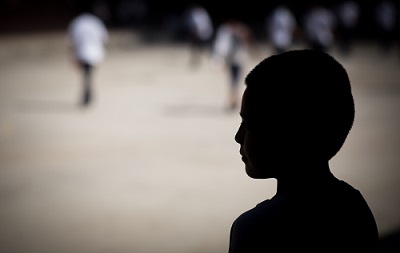Violent discipline, sexual abuse and homicides stalk millions of children worldwide – UNICEF
Violence against children – some as young as one year old – is pervasive in homes, schools and communities, new report with disturbing data reveals
Staggering numbers of children – some as young as 12 months old – are experiencing violence, often by those entrusted to take care of them, UNICEF said in a new report released on Nov 01.

Javier*, 10, looks onto the playground at his school in San Pedro Sula, Honduras. Violence is part of his life - his classmates, 5 uncles and father were killed by gangs. He lives with his grandma, who fears for his safety.
“The harm inflicted on children around the world does tremendous damage,” said UNICEF Chief of Child Protection Cornelius Williams. “Babies slapped in the face; girls and boys forced into sexual acts; adolescents murdered in their communities – violence against children knows no boundaries.”
A Familiar Face: Violence in the lives of children and adolescents uses the very latest data to show that children experience violence across all stages of childhood and in all settings:
Violence against young children in their homes:
• Three-quarters of the world’s 2- to 4-year-old children – around 300 million – experience psychological aggression and/or physical punishment by their caregivers at home;
• Around 6 in 10 one year olds in 30 countries with available data are subjected to violent discipline on a regular basis. Nearly a quarter of one-year-olds are physically shaken as punishment and nearly 1 in 10 are hit or slapped on the face, head or ears.
• Worldwide, 1 in 4 children under age five – 176 million – are living with a mother who is a victim of intimate partner violence.
Sexual violence against girls and boys:
• Worldwide, around 15 million adolescent girls aged 15 to 19 have experienced forced sexual intercourse or other forced sexual acts in their lifetime.
• Only 1 per cent of adolescent girls who had experienced sexual violence said they reached out for professional help.
• In the 28 countries with data, 90 per cent of adolescent girls who had experienced forced sex, on average, said the perpetrator of the first incident was known to them. Data from six countries reveals friends, classmates and partners were among the most frequently cited perpetrators of sexual violence against adolescent boys.
Violent deaths among adolescents:
• Globally, every 7 minutes an adolescent is killed by an act of violence.
• In the United States, adolescent boys from African American or black non-Hispanic populations are almost 19 times more likely to be murdered than non-Hispanic white adolescent boys.
• Latin America and the Caribbean is the only region where adolescent homicide rates have increased; nearly half of all homicides among adolescents globally occurred in this region in 2015.
Violence in schools:
• Half the population of school-age children – 732 million – live in countries where corporal punishment at school is not fully prohibited.
• Three-quarters of documented school shootings that have taken place over the past 25 years in non-conflict countries occurred in the United States.
UNICEF prioritises efforts to end violence across all its work, including supporting government efforts to improve services for children affected by violence, developing policies and legislation that protect children, and helping communities, parents and children to prevent violence through practical programmes like parenting courses and actions against domestic violence.
To end violence against children, UNICEF is calling for governments to take urgent action and support the INSPIRE guidance which has been agreed and promoted by WHO, UNICEF and the Global Partnership to End Violence Against Children, including:
• Adopting well-coordinated national action plans to end violence against children – incorporating education, social welfare, justice and health systems, as well as communities and children themselves.
• Changing behaviours of adults and addressing factors that contribute to violence against children, including economic and social inequities, social and cultural norms that condone violence, inadequate policies and legislation, insufficient services for victims, and limited investments in effective systems to prevent and respond to violence.
• Focussing national policies on minimizing violent behaviour, reducing inequalities, and limiting access to firearms and other weapons.
• Building social service systems and training social workers to provide referrals, counselling and therapeutic services for children who have experienced violence.
• Educating children, parents, teachers, and community members to recognise violence in all its many forms and empowering them to speak out and report violence safely.
• Collecting better disaggregated data on violence against children and tracking progress through robust monitoring and evaluation.
Source:United Nations Children's Fund
- 216 reads
Human Rights
Ringing FOWPAL’s Peace Bell for the World:Nobel Peace Prize Laureates’ Visions and Actions

Protecting the World’s Cultural Diversity for a Sustainable Future

The Peace Bell Resonates at the 27th Eurasian Economic Summit

Declaration of World Day of the Power of Hope Endorsed by People in 158 Nations

Puppet Show I International Friendship Day 2020

